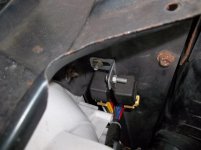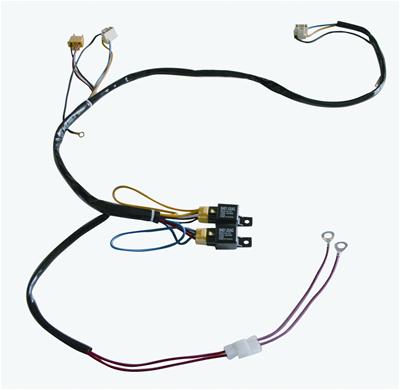XxJenoxX
Skin Suit
- Joined
- Apr 25, 2010
- Location
- Pittsburgh, PA
I'm finally getting around to (hopefully) doing more than contemplating these ecodes. I finally have all the parts, and thank god I didn't put them on the sedan like originally intended. That would have sucked.
Just went out to the wagon and looked around at where I might want to mount the two relays, and I've arrived at a couple of questions:
1. Where are you guys putting them? I'm maybe regretting getting these nice waterproof ones, for the sheer size of them. There aren't a lot of good places to put them side-by-side, and the only mirrored locations to put one here and one there seem to be towards the front cowl, mounted vertically alongside the fan. It's a '92 with 2.4 and ABS, so while there's a lot of free space in the bay, flat surfaces to mount to are minimal. Strut tower on the passenger side? Seems like a lot of exhaust heat. God forbid I ever throw a turbo near them.
2. My understanding is that most people are using one for high beam and one for low beam. Where is the bulb-out indicator measuring resistance? If I put the relays off to one side, or one on each side of the cowl/radiator pillars (ffs, I can't think of what it's called), is it going to measure too much additional resistance on the side with longer wires from bulb to relay?
3. I was just going to probably put the fuse block somewhere inside the car, for consistency's sake. Any objections?
Bestow upon me your wisdoms! I've looked around, but the death of photobucket has made this less than helpful.
Just went out to the wagon and looked around at where I might want to mount the two relays, and I've arrived at a couple of questions:
1. Where are you guys putting them? I'm maybe regretting getting these nice waterproof ones, for the sheer size of them. There aren't a lot of good places to put them side-by-side, and the only mirrored locations to put one here and one there seem to be towards the front cowl, mounted vertically alongside the fan. It's a '92 with 2.4 and ABS, so while there's a lot of free space in the bay, flat surfaces to mount to are minimal. Strut tower on the passenger side? Seems like a lot of exhaust heat. God forbid I ever throw a turbo near them.
2. My understanding is that most people are using one for high beam and one for low beam. Where is the bulb-out indicator measuring resistance? If I put the relays off to one side, or one on each side of the cowl/radiator pillars (ffs, I can't think of what it's called), is it going to measure too much additional resistance on the side with longer wires from bulb to relay?
3. I was just going to probably put the fuse block somewhere inside the car, for consistency's sake. Any objections?
Bestow upon me your wisdoms! I've looked around, but the death of photobucket has made this less than helpful.







